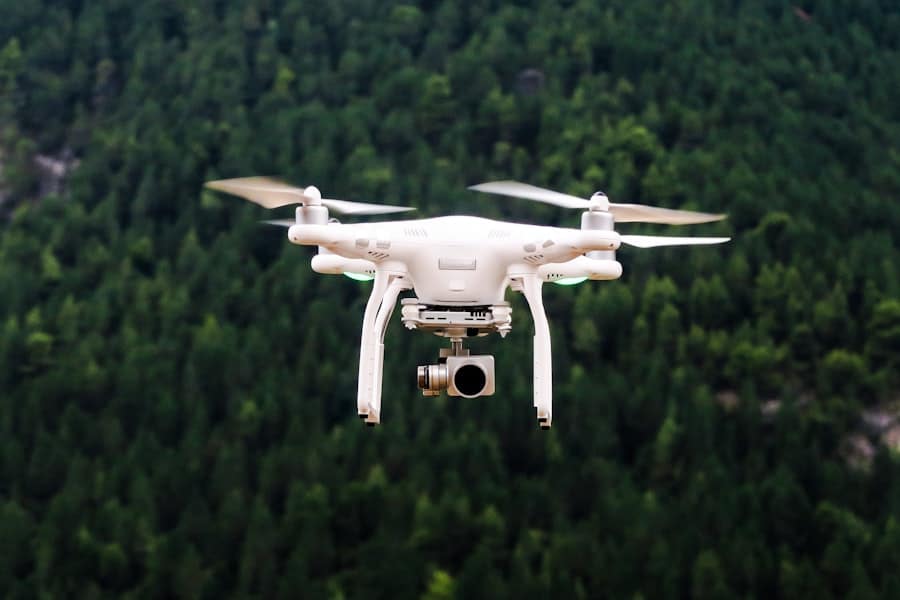The advent of artificial intelligence (AI) has revolutionized numerous industries, and aerospace is no exception. AI-driven predictive maintenance represents a paradigm shift in how aircraft maintenance is approached, moving from traditional reactive strategies to proactive, data-informed decision-making. This transition is not merely a technological upgrade; it signifies a fundamental change in the operational philosophy of aerospace maintenance.
By leveraging vast amounts of data generated by aircraft systems, AI algorithms can predict potential failures before they occur, thereby enhancing safety and operational efficiency. Predictive maintenance utilizes machine learning algorithms and data analytics to identify patterns and anomalies in aircraft performance. This approach allows maintenance teams to anticipate issues based on historical data and real-time monitoring, rather than relying solely on scheduled inspections or responding to failures after they happen.
The integration of AI into predictive maintenance processes not only improves the reliability of aircraft but also optimizes maintenance schedules, reducing downtime and operational costs. As the aerospace industry continues to embrace digital transformation, AI-driven predictive maintenance stands at the forefront, promising to enhance safety and efficiency in an increasingly complex operational environment.
Key Takeaways
- AI-driven predictive maintenance is revolutionizing the aerospace industry by using advanced algorithms to predict equipment failures before they occur.
- AI plays a crucial role in improving aerospace safety by analyzing vast amounts of data to identify potential issues and prevent accidents.
- The benefits of AI-driven predictive maintenance in aerospace include increased safety, reduced downtime, and cost savings through proactive maintenance.
- AI improves aircraft reliability and performance by detecting anomalies and patterns in data, allowing for timely maintenance and optimal operation.
- The impact of AI on cost savings and efficiency in aerospace maintenance is significant, as it allows for better resource allocation and reduced operational costs.
The Role of AI in Aerospace Safety
AI plays a critical role in enhancing safety within the aerospace sector by providing advanced tools for monitoring and analyzing aircraft systems. One of the most significant contributions of AI is its ability to process and analyze large datasets from various sources, including flight data recorders, engine sensors, and maintenance logs. By employing machine learning techniques, AI can identify subtle patterns that may indicate potential safety risks, allowing for timely interventions before issues escalate into serious problems.
For instance, AI algorithms can analyze engine performance data to detect deviations from normal operating conditions. If an engine exhibits unusual vibrations or temperature fluctuations, the system can alert maintenance crews to investigate further. This proactive approach not only helps prevent catastrophic failures but also fosters a culture of safety within organizations.
Moreover, AI can assist in simulating various failure scenarios, enabling engineers to understand potential risks better and develop more effective mitigation strategies. By integrating AI into safety protocols, the aerospace industry can significantly reduce the likelihood of accidents and enhance overall operational safety.
Benefits of AI-Driven Predictive Maintenance in Aerospace
The benefits of AI-driven predictive maintenance in aerospace are manifold, extending beyond mere cost savings to encompass improved safety, efficiency, and reliability. One of the most notable advantages is the reduction in unplanned maintenance events. Traditional maintenance practices often rely on fixed schedules or reactive measures, which can lead to unexpected aircraft downtime.
In contrast, predictive maintenance allows airlines to perform maintenance activities based on actual aircraft condition rather than arbitrary timelines. This shift not only minimizes disruptions but also ensures that aircraft are maintained at optimal intervals. Additionally, AI-driven predictive maintenance enhances resource allocation within maintenance teams.
By accurately predicting when components are likely to fail or require servicing, airlines can optimize their workforce and inventory management.
This strategic planning leads to more efficient use of resources and reduces the overall cost of maintenance operations.
How AI Improves Aircraft Reliability and Performance
AI significantly enhances aircraft reliability and performance through continuous monitoring and analysis of various systems. By utilizing real-time data from sensors embedded in aircraft components, AI algorithms can assess the health of critical systems such as engines, avionics, and landing gear. This constant vigilance allows for early detection of potential issues that could compromise performance or safety.
For instance, if an engine’s fuel efficiency begins to decline due to wear or malfunction, AI can identify this trend and prompt maintenance actions before it leads to more severe problems. Moreover, AI’s ability to analyze historical performance data enables airlines to optimize their operational strategies. By understanding how different factors—such as weather conditions, flight paths, and load factors—affect aircraft performance, airlines can make informed decisions that enhance fuel efficiency and reduce emissions.
For example, AI can suggest optimal flight altitudes or speeds based on real-time atmospheric conditions, leading to more efficient fuel consumption. This not only improves the bottom line for airlines but also contributes to environmental sustainability efforts within the industry.
The Impact of AI on Cost Savings and Efficiency in Aerospace Maintenance
The integration of AI into predictive maintenance practices has profound implications for cost savings and operational efficiency in aerospace maintenance. One of the most significant impacts is the reduction in maintenance costs associated with unplanned repairs. By predicting when components are likely to fail, airlines can schedule maintenance activities more effectively, avoiding costly emergency repairs that often arise from unexpected breakdowns.
This proactive approach not only saves money but also minimizes aircraft downtime, allowing airlines to maximize their operational capacity. Furthermore, AI-driven predictive maintenance enhances inventory management by ensuring that spare parts are available when needed without overstocking. Traditional inventory practices often lead to excess inventory costs or delays in obtaining necessary parts during critical repairs.
With AI’s predictive capabilities, airlines can maintain optimal inventory levels based on accurate forecasts of component lifecycles and demand patterns. This streamlined approach reduces waste and ensures that resources are allocated efficiently, ultimately contributing to improved profitability for airlines.
Challenges and Limitations of AI-Driven Predictive Maintenance
Data Quality and Availability
One significant challenge is the quality and availability of data required for effective machine learning algorithms. Predictive models rely heavily on historical data to identify patterns and make accurate predictions. However, many airlines may struggle with incomplete or inconsistent data due to legacy systems or inadequate data collection practices. Ensuring high-quality data is essential for the success of AI initiatives; otherwise, the predictions generated may be unreliable or misleading.
Integration with Existing Systems and Processes
Another challenge lies in the integration of AI technologies with existing maintenance processes and systems. Many aerospace organizations have established workflows that may not easily accommodate new technologies. Resistance to change among personnel can also hinder the adoption of AI-driven solutions. Training staff to understand and effectively utilize AI tools is crucial for successful implementation.
Regulatory Considerations
Additionally, regulatory considerations must be addressed as aviation authorities evaluate the safety implications of relying on AI for critical maintenance decisions.
Future Trends and Developments in AI-Driven Predictive Maintenance for Aerospace
As technology continues to evolve, several trends are emerging that will shape the future of AI-driven predictive maintenance in aerospace. One notable trend is the increasing use of advanced analytics and machine learning techniques that go beyond traditional statistical methods. Techniques such as deep learning are being explored for their potential to uncover complex relationships within large datasets, leading to more accurate predictions and insights into aircraft performance.
Another significant development is the growing emphasis on collaborative data sharing among airlines, manufacturers, and service providers. By pooling data from multiple sources, stakeholders can enhance their predictive models and improve overall industry safety standards. Initiatives aimed at creating industry-wide databases for sharing anonymized performance data are gaining traction, fostering a culture of collaboration that benefits all parties involved.
Moreover, the integration of Internet of Things (IoT) technology with AI is expected to further enhance predictive maintenance capabilities. IoT devices equipped with sensors can provide real-time data on aircraft conditions directly from the field, enabling more immediate analysis and response. This synergy between IoT and AI will likely lead to even more sophisticated predictive models that can adapt dynamically to changing conditions.
The Future of Aerospace Safety with AI-Driven Predictive Maintenance
The future of aerospace safety is poised for transformation through the continued advancement of AI-driven predictive maintenance technologies. As airlines increasingly adopt these innovative solutions, they will benefit from enhanced safety protocols, improved operational efficiency, and significant cost savings. The ability to predict potential failures before they occur will not only protect passengers but also foster greater trust in air travel as a safe mode of transportation.
As challenges related to data quality and integration are addressed through ongoing research and collaboration within the industry, the full potential of AI-driven predictive maintenance will be realized. The convergence of advanced analytics, IoT technology, and collaborative data sharing will pave the way for a new era in aerospace maintenance—one characterized by unprecedented levels of reliability and safety. As we look ahead, it is clear that AI will play an integral role in shaping the future landscape of aerospace safety and operational excellence.
A related article discussing the best software for furniture design can be found at this link. This article provides insights into the latest technology tools that are revolutionizing the furniture design industry. Just like AI-driven predictive maintenance is enhancing aerospace safety, innovative software solutions are transforming the way furniture designers create and visualize their products. Both articles highlight the importance of leveraging cutting-edge technology to improve safety and efficiency in different industries.
FAQs
What is AI-driven predictive maintenance in aerospace?
AI-driven predictive maintenance in aerospace is the use of artificial intelligence and machine learning algorithms to analyze data from aircraft components and systems in order to predict when maintenance is needed. This proactive approach helps to prevent unexpected failures and improve overall safety.
How does AI-driven predictive maintenance enhance aerospace safety?
AI-driven predictive maintenance enhances aerospace safety by allowing for the early detection of potential issues with aircraft components and systems. By predicting when maintenance is needed, airlines and maintenance teams can address issues before they become safety hazards, reducing the risk of in-flight failures and accidents.
What are the benefits of AI-driven predictive maintenance in aerospace?
The benefits of AI-driven predictive maintenance in aerospace include improved safety, reduced downtime for aircraft, lower maintenance costs, and increased operational efficiency. By identifying potential issues before they occur, airlines can better plan and schedule maintenance, leading to a more reliable and safe fleet of aircraft.
How does AI analyze data for predictive maintenance in aerospace?
AI analyzes data for predictive maintenance in aerospace by using machine learning algorithms to identify patterns and anomalies in the data collected from aircraft components and systems. This analysis helps to predict when maintenance is needed and can also provide insights into the overall health and performance of the aircraft.
What are some examples of AI-driven predictive maintenance in aerospace?
Examples of AI-driven predictive maintenance in aerospace include the use of sensors to collect data on aircraft engines, avionics systems, and other critical components. This data is then analyzed using AI algorithms to predict when maintenance is needed and to identify potential issues before they become safety hazards.



